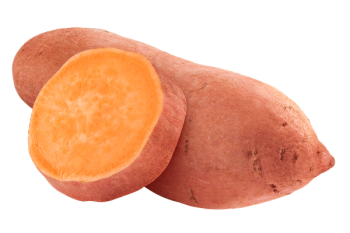
Studying Cyclodextrins with UHPLC-MS/MS
Saba Aslani from the University of Texas at Arlington spoke to LCGC International about a collaborative project with Northwestern University, the University of Hong Kong, and BioTools, Inc., investigating mirror-image cyclodextrins using ultra-high performance liquid chromatography–tandem mass spectrometry (UHPLC–MS/MS) and vibrational circular dichroism (VCD).
Cyclodextrins (CDs) are significant in macrocyclic science, especially because of their chiral carbohydrate structure and ability to form inclusion complexes. A recent research article authored by scientists from the University of Texas at Arlington, Northwestern University, the University of Hong Kong, and the life science tools company BioTools, Inc. (Jupiter, Florida) discusses recent advances in CD research. The synthesis, characterization, and analysis of mirror-image (enantiomeric) CDs, known as L-cyclodextrins (L-CDs), offer exciting possibilities for advancing chiral chemistry, biological applications, and materials science. LCGC International spoke to Saba Aslani of the University of Texas at Arlington about the study and the article that resulted from it.
You recently published paper is called “Actions and Interaction of Mirror-Image Cyclodextrins” (1) What are cyclodextrins and why are you studying their actions and interactions?
Cyclodextrins (CDs) are cyclic oligosaccharides composed of α-1,4-linked D-glucose units. The most studied variants are α-, β-, and γ-cyclodextrins, which contain six, seven, and eight glucose units, respectively. As a class, CDs exceed all other macrocyclic entities combined in terms of publications, patents, applications, and materials produced. Their toroidal shape, hydrophobic cavity, and hydrophilic exterior allow them to host a wide range of guest molecules through inclusion complexation. This ability, combined with their chirality, makes CDs incredibly valuable and versatile across various areas of chemistry, including organo-catalysis, chiral recognition, separations, synthesis, drug delivery, medical imaging, and even cosmetics. What currently makes this area especially exciting is the recent availability of mirror-image cyclodextrins(2). We are now able to ask fundamental questions about how molecular chirality impacts host-guest interactions. How can the complimentary selectivity of the L-CDs be beneficial in chiral separations? Do they show different susceptibility to enzyme degradation in biological systems? What would be a robust method to separate and quantify the enantiomers of these carbohydrate molecules? By studying the actions and interactions of both natural and mirror-image CDs, we are aiming to expand our understanding of supramolecular recognition and potentially unlock new tools for analytical chemistry and materials design.
You cite another study on the synthesis of mirror-image cyclodextrins, and the paper resulting from it (2), was an impetus for the study you mentioned previously. Please explain how and why.
Natural D-cyclodextrins are widely available for research and industrial use since they are readily produced in large quantities through enzymatic modification of amylose. However, their mirror-image L-counterparts were not accessible due to the challenging synthesis and unavailability of the L-glucose containing oligosaccharides and the lack of an L-glucotransferase enzyme. In an earlier collaborative project (2) with Yong Wu of the research group of the late Sir Fraser Stoddart, we reported the first efficient synthesis of L-CDs, 133 years after the discovery of their natural D-forms. This major milestone provided us with access to these previously unattainable molecules. In my recent publication co-authored with Daniel W. Armstrong (1), we explored and compared the actions and interactions of mirror-image CD enantiomers in various contexts, including biological stability through enzymatic susceptibility, absolute configuration determination, and enantioselective interactions and separations. The goal was to identify the possibility of complementary or novel applications of L-CDs alongside their natural D-counterparts.
Ultra-high performance liquid chromatography-tandem mass spectrometry (UHPLC–MS/MS) was the technique of choice for your analysis. What benefits did using this technique offer?
CD molecules are poor UV absorbers due to the absence of strong chromophores in their structure, which makes traditional UV detection methods less sensitive for their analysis, especially in complex mixtures. The tandem mass spectrometry approach, using single reaction monitoring (SRM), enabled me to selectively track each cyclodextrin in the presence of various byproducts, enzyme residues and degradation intermediates. Therefore, by using UHPLC–MS/MS, we were able to significantly enhance the sensitivity and specificity of the analysis.
What were your main findings? Was there anything surprising or interesting?
This article reports for the first time the examples of highly stereoselective enzymatic reactions with CD enantiomers. I observed that all synthetic L-CDs were resistant to enzymatic degradation using the specific amylases used (α-amylase from aspergillus, taka diastase, α-amylase from human saliva, α-amylase from Bacillus subtilis). This suggests a potential use of L-CDs as more stable means of drug delivery. In addition, I was able to develop the enantiomeric separation method for mirror-image cyclodextrins without the need for derivatization or chiral resolving agents. To our knowledge, the separation of carbohydrate enantiomers that are not monosaccharides and without derivatization and chiral resolving agents has not been reported in literature. Additionally, the electrophoretic migration of small chiral molecules, such as amino acids, was easily and predictably reversed in the presence of D- and L-CDs.
Despite the challenging calculations, our collaborator, Jordan Nafie from Bio Tools Inc., successfully obtained the vibrational circular dichroism (VCD) spectra for all the cyclodextrins. The CDs are the highest molecular weight enantiomeric compounds yet analyzed with VCD. The results show that the strongest absorbance bands are at 1150 cm-1,related to the stretching of the C–O bands of the CD torus. This suggests possible effect of stereoselective excitation of CD molecules through radiation of light at 1150 cm-1 on strength and selectivity of inclusion complexation and could be further investigated in the future.
What were the main analytical challenges you encountered and how did you overcome them?
The separation of CD enantiomers was challenging as such separation of polysaccharides was not done before without derivatization or addition of chiral resolving agents. Only the group of chiral stationary phases based on macrocyclic glycopeptides showed considerable selectivity and short retention times for mirror-image CDs which allowed sensitive and selective MS/MS detection of all α, β, and γ-CD enantiomers. Another challenge was the size of the CDs, and the calculations needed for obtaining their VCD spectra. However, their structural rigidity helped in making the calculations simpler. Although time-consuming, the VCD calculations for the largest and most flexible γ-CD closely matched experimental results, broadening the method’s applicability.
Were there any limitations to this research that are important to note?
Yes, there were a few important limitations in this study. One of the main challenges was the production of maltooligosacharide peaks present in the control enzyme samples which overlapped with the oligosaccharides produced from the enzymatic degradation of cyclodextrins. This overlap made it difficult to directly monitor product formation using UHPLC–MS/MS. As a result, instead of tracking specific degradation products, we focused on monitoring the disappearance of the starting mirror-image cyclodextrins as an indirect but reliable indicator of enzymatic activity.
In addition, the synthesis of the L-CDs must be optimized for large-scale production. With increased production, more in-depth kinetic, mechanistic, and biological studies will be done. The results we obtained provided strong evidence for selective enzymatic recognition and degradation of the CDs. Further enzymatic studies are being planned which will open the door for future work with improved materials and more refined analytical techniques.
How could the findings of this method be applied practically in analytical laboratories for studying other macrocycles?
This study provides multiple analytical strategies that could serve as valuable starting points for researchers working with other macrocyclic compounds, especially those interested in stereochemistry and enantiomeric discrimination. The enantioselective separation methods, including UHPLC–MS/MS and capillary electrophoresis, offer useful approaches for separation of oligosaccharides and polysaccharides without derivatization, leading to preserved native structures and simplified workflows in analysis of complex biologics.
The enzymatic degradation studies establish experimental conditions that can be adapted for other macrocycles. The greater stability of L-CDs compared to D-CDs against enzymatic degradation can be leveraged for the development ofenantioselective supramolecular materials, sensors, and medical devices that must perform reliably in complex or harsh biological environments such as pharmaceutical formulations requiring long-term drug delivery.
Notably, the VCD results indicate that specific frequencies may influence enantioselective inclusion complexation. This enantioselective excitation could be explored in future studies on how circularly polarized infrared radiation could modulate inclusion complexation and other interactions involving these macrocycles.
What are the next steps in this research?
The next phase of our research focuses on exploring practical applications for the newly synthesized L-cyclodextrins. While our initial studies confirmed their successful synthesis, and explored the enzymatic degradation, and chiral recognition, we now want to demonstrate how these mirror-image macrocycles can be used in real-world analytical and separation systems.
The L-CDs were selected as the Chemical & Engineering News’ 2024 Molecule of the Year due to the immense potential they can bring to the world of supramolecular chemistry.The goal is to not only expand the scope of this field with L-CDs but also provide analytical laboratories with new tools for challenging separation problems.Specifically, the plan is to evaluate their performance as chiral selectors in capillary electrophoresis, as well as incorporating them as GC and LC stationary phases to take advantage of the enantioselectivity that is complimentary to their D counterparts.
Reference
1. Armstrong, D. W.; Aslani, S.; Nafie, J.; Wu, Y.; Stoddart, J. F. Actions and Interactions of Mirror-Image Cyclodextrins. JACS Au 2024, 5 (2), 693-701. DOI:
2. Wu, Y.; Aslani, S.; Han, H.; Tang, C.; Wu, G.; Li, X.; Wu, H.; Stern, C. L.; Guo, Q.-H.; Qiu, Y. Mirror-Image Cyclodextrins. Nat. Synth. 2024, 3 (6), 698– 706. DOI:
Newsletter
Join the global community of analytical scientists who trust LCGC for insights on the latest techniques, trends, and expert solutions in chromatography.





